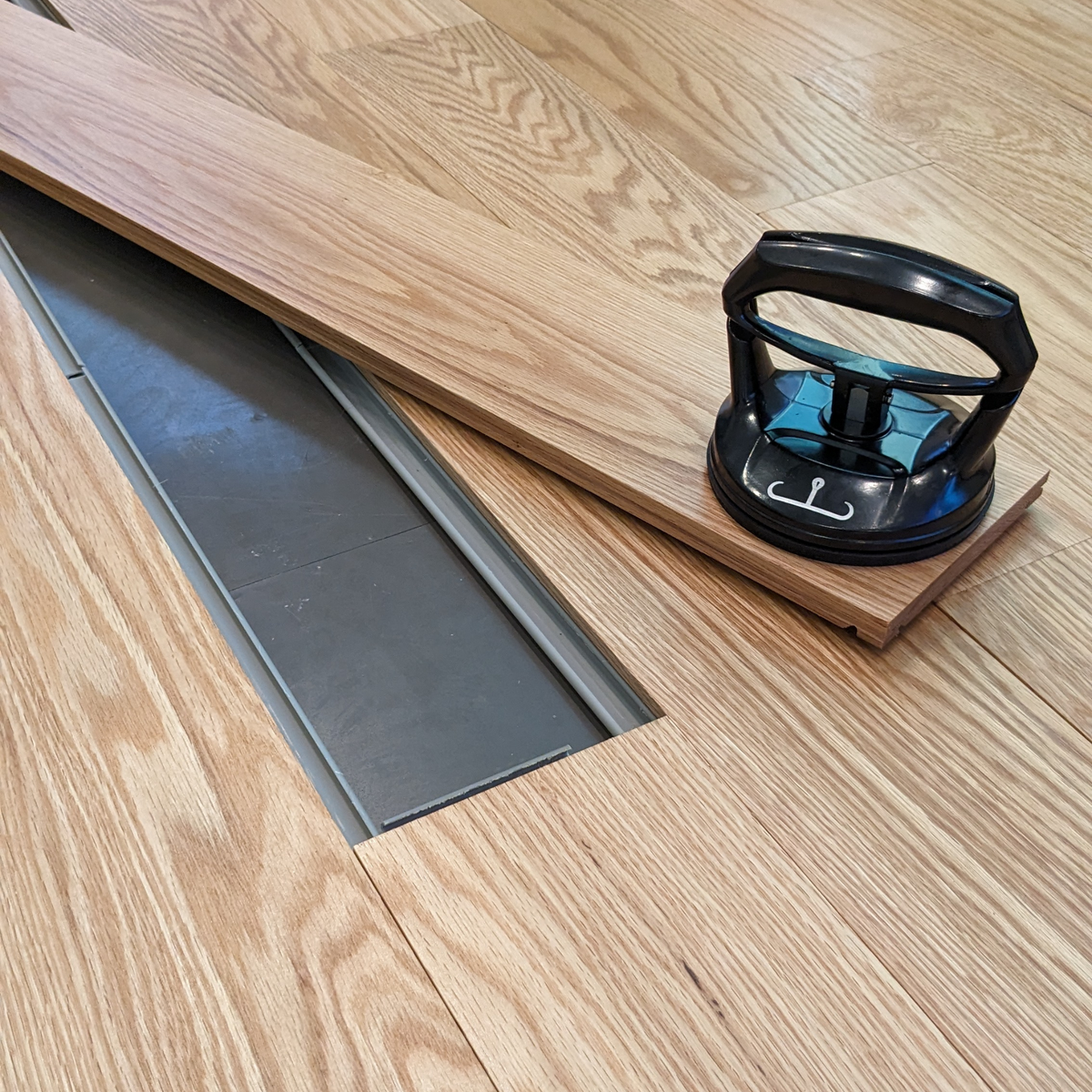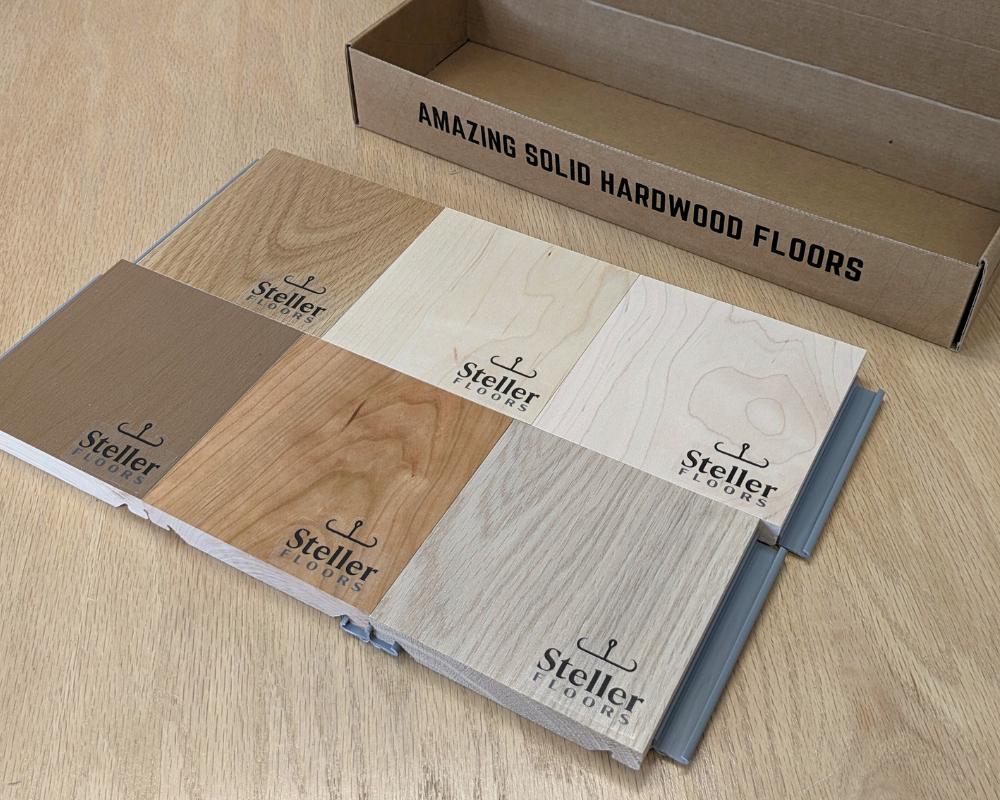Preparing for a Steller Floor: Site Recommendations
Steller planks are made of high-quality solid hardwood and float over the subfloor without nails or glue, so site preparation is quite simple.
Basic Site Recommendations:
- A flat, firm subfloor
- A moisture barrier
- A controlled, indoor climate
- (Optional) Subfloor heat guidelines
Subfloor Specifications
A Steller Floor assembly is specifically designed to be installed on flat, firm, and continuous surfaces made of OSB, plywood or concrete. It is important to note that the clips used in the assembly are not self-supporting, which means they cannot be installed over free-spans.
We recommend that the subfloor should be flat within an 1/8" over an 8-10 ft area, including deflection. Deflection is a common occurrence in building materials, and it refers to the degree of bending or sagging in the subfloor. Therefore, subfloors should not be exceptionally "bouncy" or "squishy," as it can lead to an uneven installation of the Steller Floor. If your subfloor is uneven, bouncy, or squishy, we strongly advise remediating your subfloor before installing your Steller Floor.
Moisture Barriers
Steller Floors are made of solid wood which, while beautiful and long lasting, is also a porous material that can absorb moisture. Moisture can come from a variety of sources, including groundwater, plumbing leaks, or high humidity levels.
To prevent moisture from affecting your Steller Floor, we recommend using a moisture barrier. A moisture barrier is a layer of material that is installed between the subfloor and the hardwood floor. Its purpose is to prevent moisture from seeping through the subfloor and reaching the underside of the hardwood planks. A moisture barrier is particularly important if your subfloor is made of concrete, as concrete tends to retain and transfer moisture.
A commonly used moisture barrier for Steller Floors is 6 mil polyethylene. This is a thin, flexible plastic sheet that can be easily installed over the subfloor. It is available at most hardware stores and is relatively inexpensive. If you are concerned that moisture might become trapped against wooden components beneath your moisture barrier - you might consider house wrap or remediating the moisture issues in your lower levels.
To install a moisture barrier, simply roll out the polyethylene sheet over the subfloor and secure it in place with tape or adhesive. Make sure that the sheet covers the entire surface of the subfloor and that there are no gaps.
A Controlled, Interior Climate
For all wood products, it is important to maintain a controlled indoor climate. This means keeping the humidity levels between 35% and 50% RH ("relative humidity"). High humidity levels can cause the hardwood planks to expand, while low humidity levels can cause them to shrink. Sudden temperature changes can affect humidity and so we recommend keeping your interior climate between 65 and 80 degrees Fahrenheit.
Climate Control
Learn about recommended interior humidity controls.
Acclimation
Consider whether it is useful to acclimate your Steller Floor before install.
Expansion Gaps
Understand what expansion gaps are recommended and how to create them.
Subfloor Heat Recommendations
Reach out for Steller Support!
We can help you troubleshoot over the phone, by email, or by video appointment from our studio! 1-800-955-7671 or support@floorsbysteller.com







